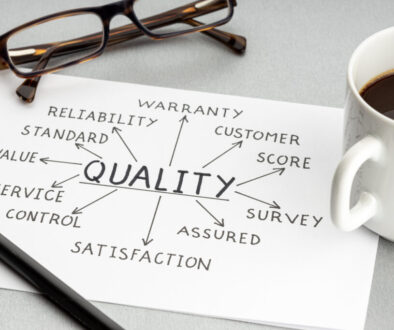Introduction
Quality management is a crucial aspect of modern business operations, regardless of industry or size. It’s all about ensuring that your products, services, and processes consistently meet or exceed customer expectations. While quality management might sound complex, it can be broken down into essential concepts that are easy to understand and implement. In this comprehensive guide, we’ll simplify quality management for you by exploring its key concepts and how they contribute to the success of your business.
1. Understanding Quality and Its Impact
Quality is not just a measure; it’s a driving force behind customer satisfaction, loyalty, and business growth. When your customers receive products or services that consistently perform as promised, they’re more likely to become repeat buyers and recommend your offerings to others. Quality isn’t limited to the end product—it extends to every step of your processes, from design and production to customer support.
2. The Fundamentals of Quality Management
A. Customer Focus: Everything begins with understanding your customers’ needs and expectations. The better you understand them, the more effectively you can tailor your products and services to meet those needs.
B. Continuous Improvement: Quality management is an ongoing journey. Strive to continuously improve your processes, products, and services based on feedback and data-driven insights.
C. Process-Oriented Approach: Focus on optimizing your processes to ensure consistency and efficiency. Document processes, identify bottlenecks, and eliminate wasteful steps.
3. The PDCA Cycle: Plan, Do, Check, Act
A. Plan: Define your objectives and the processes needed to achieve them. Set measurable goals and create a roadmap for improvement.
B. Do: Execute your plan, implement changes, and gather relevant data during the process.
C. Check: Assess the data you’ve collected to determine whether the changes led to the desired improvements. Identify any deviations from your goals.
D. Act: Based on your assessment, take appropriate actions. If the changes were successful, standardize them. If not, refine your approach and try again.
4. Key Quality Management Techniques
A. Six Sigma: This methodology aims to reduce defects and variations in processes. It uses data analysis and statistical tools to identify and eliminate root causes of problems.
B. Total Quality Management (TQM): TQM emphasizes involving every employee in the pursuit of quality. It focuses on continuous improvement, customer satisfaction, and employee empowerment.
C. Lean Management: Lean focuses on eliminating waste in processes, thereby improving efficiency and reducing costs. It involves techniques like value stream mapping and 5S.
5. Tools for Quality Management
A. Quality Control Tools: Tools like Pareto charts, cause-and-effect diagrams, and control charts help analyze and address quality issues.
B. Quality Assurance Tools: These tools ensure that processes are consistently followed, leading to predictable outcomes. They include process documentation and standardized work instructions.
6. Quality Management Systems
A. ISO Standards: International Organization for Standardization (ISO) provides globally recognized standards for quality management, such as ISO 9001. These standards offer guidelines for establishing effective quality management systems.
7. The Role of Leadership
Leadership plays a pivotal role in promoting a culture of quality within an organization. Leaders should provide the necessary resources, support, and encouragement for employees to engage in quality improvement initiatives.
8. Benefits of Effective Quality Management
A. Enhanced Customer Satisfaction: Consistently delivering quality products and services leads to happy customers who trust your brand.
B. Operational Efficiency: Streamlining processes and reducing waste improves productivity and reduces costs.
C. Competitive Advantage: High-quality offerings set you apart from competitors and can even justify premium pricing.
D. Risk Reduction: Effective quality management minimizes the risk of defects, recalls, and regulatory non-compliance.
Conclusion
Quality management might seem like a complex endeavor, but when broken down into its essential concepts, it becomes a manageable and highly rewarding process. By prioritizing customer needs, embracing continuous improvement, and implementing proven techniques, businesses of all sizes can elevate their products, services, and processes. Quality management isn’t just a way to meet standards; it’s a pathway to exceeding customer expectations, fostering growth, and securing a strong position in the market.











